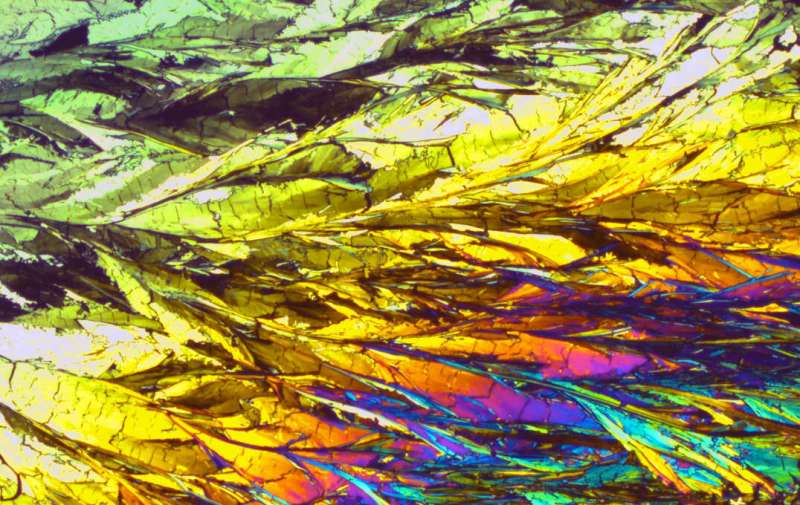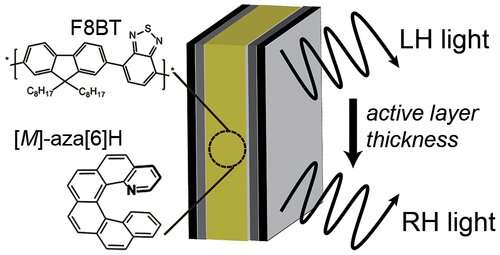New technique could brighten screens and make smartphone batteries last longer

Our future TV and smartphone screens could have double the energy efficiency, thanks to a technique invented by Imperial scientists.
The pixels in many modern screens for TVs, smartphones, tablets, and laptops are lit by little devices called OLEDs (organic light emitting diodes).
To ensure that it is possible to see the images from such screens on a bright sunny day, OLED screens are covered with an anti-glare filter. However, because of the physics of how the anti-glare filter works, half of the light generated by each OLED pixel remains trapped within the display, which halves the energy efficiency of the OLED.
The manufactures of these displays have therefore chosen to sacrifice energy efficiency to increase usability: smartphones would not be popular if their screens could not be read outside.
Now, a team of Imperial scientists from the Departments of Physics and Chemistry have developed a new type of OLED that avoids this shortcoming.
Controlling chemistry
The team, including Dr. Jess Wade, Li Wan, Professor Matthew Fuchter and Professor Alasdair Campbell, published their results in the journal ACS Nano.
Their paper shows that by controlling the chemistry of the OLED materials it is possible to produce OLEDs that give off a special type of polarised light, which can bypass the anti-glare filter. Displays made from such OLEDs should be more energy efficient, which means they will have a longer battery life and lower carbon footprint.

Dr. Wade, of Imperial's Department of Physics, said: "Our study suggests, for the first time, that by changing our OLED recipe we can generate efficient polarising OLEDs. The findings could make screens of all kinds brighter, with better contrast and longer life."
While their study was focused on OLEDs for displays, the team note that the materials and approaches they have developed could have further applications elsewhere. The polarised light generated by their materials has potential applications in the storage, transmission and encryption of information and so could be useful in computing and the data revolution.
'Inverting the Handedness of Circularly Polarized Luminescence from Light-Emitting Polymers Using Film Thickness' by Li Wan, Jessica Wade, Francesco Salerno, Oriol Arteaga, Beth Laidlaw, Xuhua Wang, Thomas Penfold, Matthew J. Fuchter and Alasdair J. Campbell is published in ACS Nano.
More information: Li Wan et al. Inverting the Handedness of Circularly Polarized Luminescence from Light-Emitting Polymers Using Film Thickness, ACS Nano (2019). DOI: 10.1021/acsnano.9b02940
Journal information: ACS Nano
Provided by Imperial College London

















